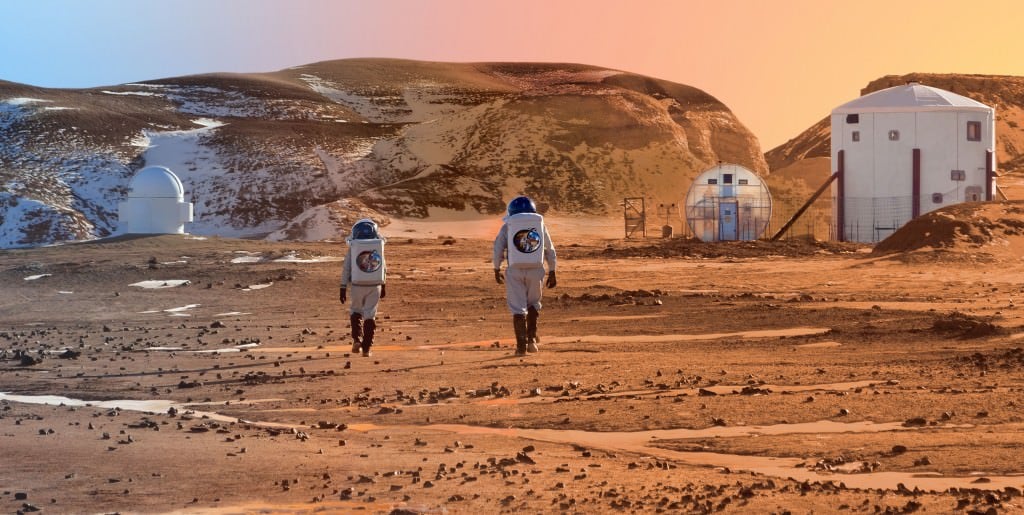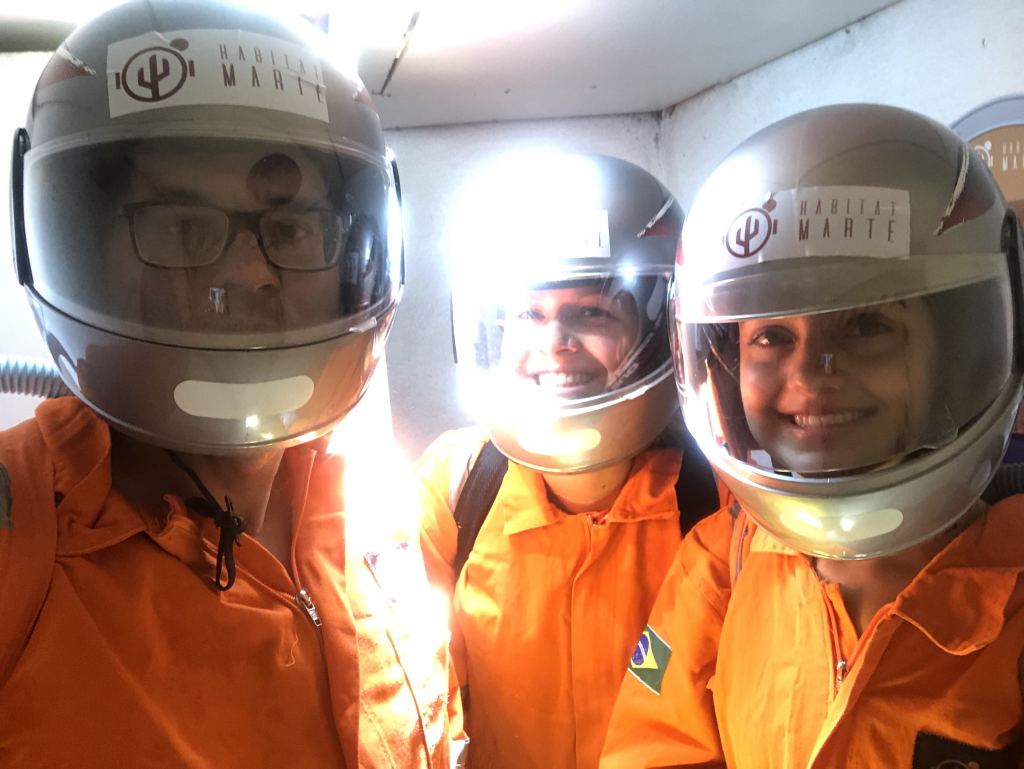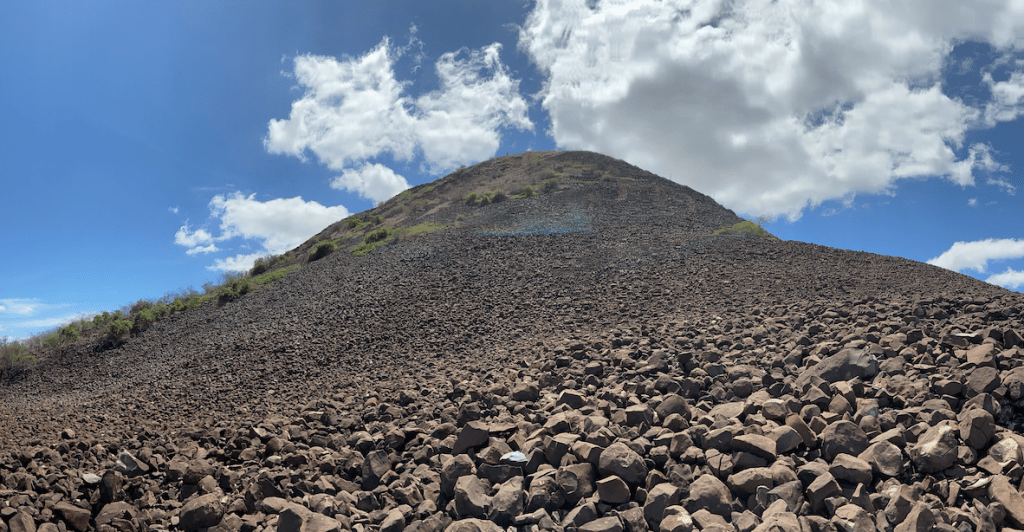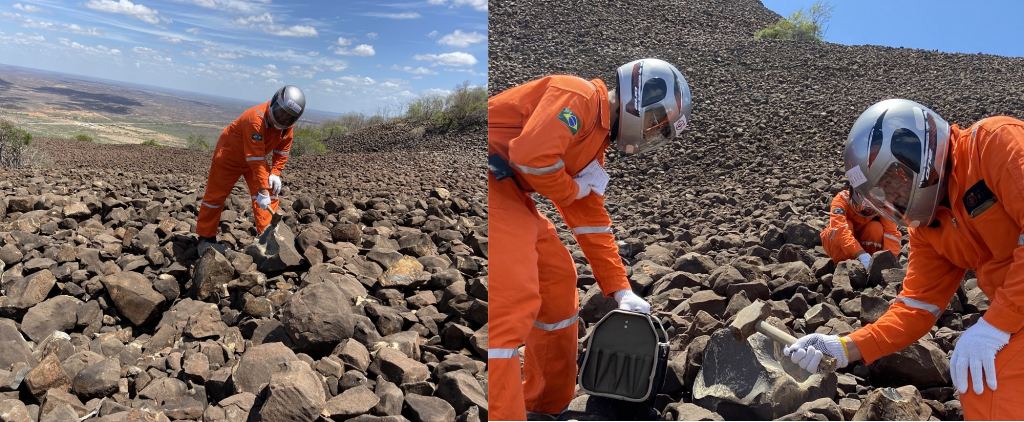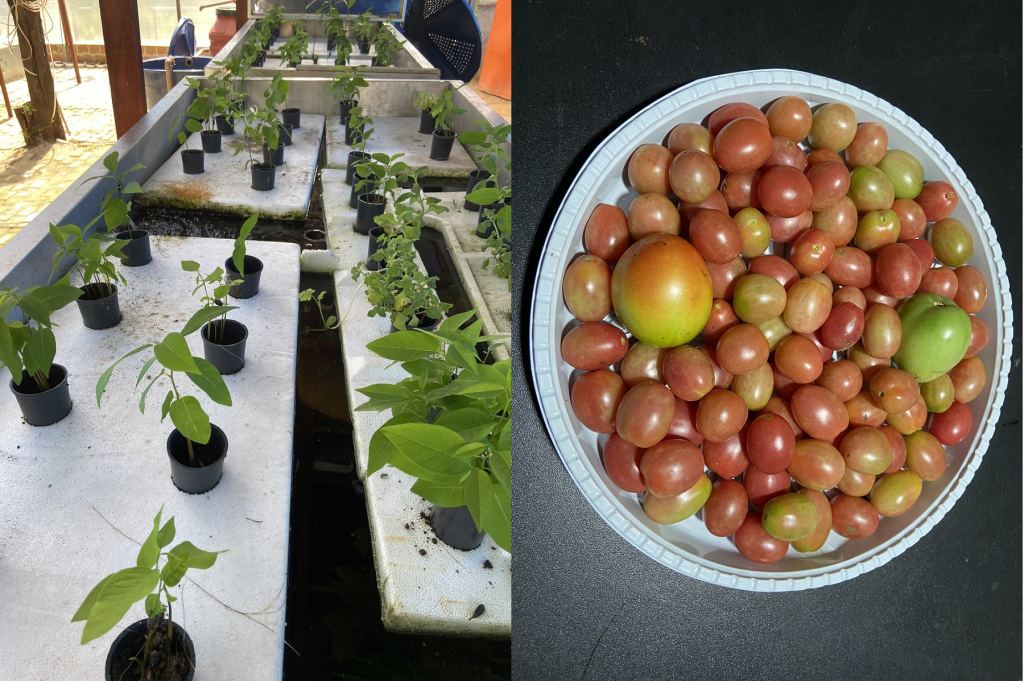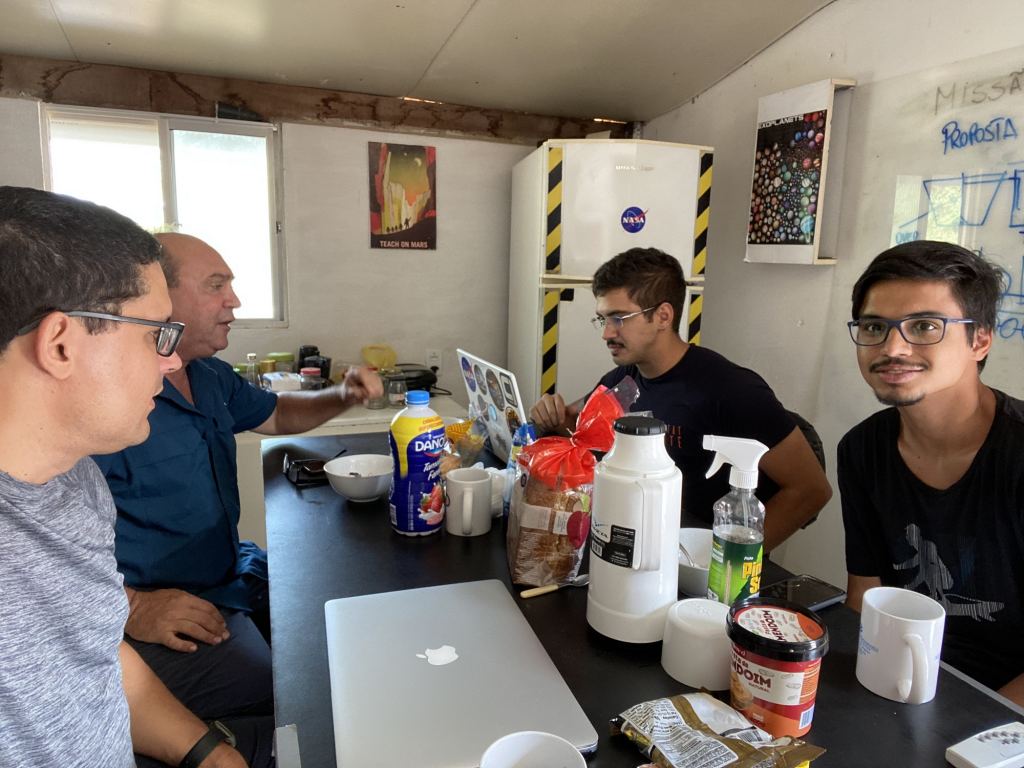There's quite a bit of buzz these days about how humanity could become a "multiplanetary" species. This is understandable considering that space agencies and aerospace companies from around the world are planning on conducting missions to Low Earth Orbit (LEO), the Moon, and Mars in the coming years, not to mention establishing a permanent human presence there and beyond.
To do this, humanity needs to develop the necessary strategies for sustainable living in hostile environments and enclosed spaces. To prepare humans for this kind of experience, groups like Habitat Marte (Mars Habitat) and others are dedicated to conducting simulated missions in analog environments. The lessons learned will not only prepare people to live and work in space but foster ideas for sustainable living here on Earth.
Habitat Marte was founded in 2017 by Julio Francisco Dantas de Rezende, the professor of sustainability in the Department of Product Engineering at the Federal University of Rio Grande do Norte (UFRN) and the Director of Innovation with the State Foundation to Research Support (FAPERN). He is also the Coordinator of Habitat Marte and Mars Society Brazil.
Prof. Rezende was inspired to bring the Mars Society to Brazil after attending their 2016 convention in Washington DC, where famed scientists and founder Robert Zubrin spoke of their mission. These include conducting simulated missions at their analog environments located in Utah (the Desert Mars Research Station) and Nunavut, Canada (the Flashline Mars Arctic Research Station).
Inspired by this work, Prof. Rezende returned to Brazil and dedicated his own resources to launch similar initiatives. The result was the Mars Society Brazil and the creation of its "Habitat Marte" training environment. As a location, they chose the semi-arid region of Caiçara do Rio do Vento - about 100 km (62 mi) west of Natal - a rugged region that receives rainfall only a few times a year, making it a good approximation to Mars.
At present, this training environment remains the only Mars analog station operating in the southern hemisphere and, like its counterparts in other countries, is dedicated to developing the skills and technologies necessary to live sustainably on Mars and other planets. As Prof Julio Rezende explained to Universe Today via email:
"[W]e are interested in designing systems that collaborate to have a self-sustainable/circular system in which the energy itself is generated, the waste generated is recycled and the food itself is produced. At Habitat Marte we are committed to the development of social technologies such as greenhouses, solar oven, cisterns, aquaponics, water filters, and greenhouses. Our challenge is to develop technologies that are applied both to space and in arid and semi-arid regions, or other regions threatened by water scarcity and droughts."
Between December of 2017 and 2020, Habitat Marte has conducted 42 missions with more than 150 participants, totaling almost 1300 hours (98 days) of mission time. As Prof. Rezende indicated, these activities have generated large volumes of data that has resulted in a variety of scientific studies and publications. For each mission, applicants spend time in the simulated habitat and conducting the following activities:
- Collection of soil and mineral samples;
- Astronomical observation;
- Evaluation and improvement of life support systems at Habitat Marte;
- *Test, improvement, and evaluation of space suits and cooling module*
- Performance of Extra-vehicular Activities (EVA);
- Intravehicular activities (IVA) - activities inside the station;
- Evaluation of behavioral aspects of the mission members;
- Reporting on the mission;
- Mapping of operational processes;
- *Development of articles that communicate mission results*
- Maintenance of the greenhouse and the aquaponics system.
In terms of food, the crews grow all the fruits and vegetables they will need, which has included eggplant, lettuce, bananas, tomatoes, peppers, and sweet potatoes in the past - apologies to Mark Watney for the lack of redskins, russets, purple, and other potatoes! For the sake of protein, the crews also farmed tilapia fish, and grew basil and cilantro for flavor and added nutrition.
They've even cultivated trees for the sake of reforestation at home (and possibly terraforming on Mars!) When not working inside, the teams would conduct extra-vehicular activity (EVA) walks outdoors while wearing spacesuits. In one instance, a team conducted an EVA to Pico do Cabugi (Cabugi Peak), an extinct volcano located about 40 km (25 mi) from the training grounds that stands 590 meters (1935 ft) in height (shown below).
While there, the team took rock samples which they will examine with the help of the geology labs in UFRN. Prof. Rezende and his colleagues also hope to use finely ground rock samples to develop a Mars soil simulant, which they will use to test the viability of growing Earth crops in Martian soil. For this research, they will be collaborating with Prof. Wieger Wamelink of the Wageningen University & Research Center in the Netherlands.
For loyal readers of Universe Today (or fans of MarsOne), Dr. Wamelink ought to be a familiar name. A few years ago, Dr. Wamelink and colleagues from Wageningen University conducted a series of agricultural studies in conjunction with MarsOne. This involved growing different types of crops in Lunar and Martian soil simulants to see which would germinate, grow, and be safe for consumption.
Between 2013 and 2015, they confirmed that a total of ten crops (including rye, radishes, garden cress, peas, green beans, tomatoes and potatoes) could all grow in Martian soil. They further found that seeds produced from these crops were able to germinate as well, thus ensuring successive harvests, and that the plants did not retain harmful levels of heavy metals (which are common in lunar and Martian soil).
Due to the coronavirus epidemic, these missions have been temporarily suspended but will resume soon. The last mission took place on March 14th, 2020, In the meantime, Prof. Rezende and his colleagues have carried on with virtual simulations, which is what the last 6 missions have been. As he described them:
"In virtual missions, participants are invited to participate in remote activities related to the Habitat Marte protocols and research themes that associate space and sustainability, observing how Habitat Marte can contribute to solutions related to isolation during the coronavirus period. We realized that the actions of Habitat Marte may present guidelines for this challenging moment."
This is a common theme among researchers, scientists, and advocates that are dedicated to finding solutions to the problem of living in space. For example, Vera Mulyani (Vera Mars) recently stated how this year's Mars City Design competition - which is focused on Urban Farming - has drawn inspiration from the pandemic and the need for "social isolation."
"In this time of crisis, envisioning how to live abundantly on another planet seems to be a far-off predicament," she said. "However, this critical time can also offer a new perspective, a change that in the long term, is necessary for the sake of our existence and evolution as human beings. This initiative can also lead to technological discoveries and innovations. Pursuing a vision of tomorrow may save today before it is too late!"
Another common element is the way research into living sustainability on other planets can have positive consequences here on Earth. In the past, efforts to send astronauts to space and the Moon (the Apollo Program) resulted in countless applications here on Earth, ranging from respirators, heart monitors, and microwave ovens to GPS, satellite communications, microchips, and solar panels.
It is therefore easy to see how Project Artemis, missions to Mars, and other plans to "go interplanetary" will help address problems here at home. With the global population expected to reach 10 billion by mid-century, and the way climate change will disrupt the natural systems we depend upon to live, knowing how to do more with less resources (and produce less waste) is vital to our survival.
Prof. Rezende himself expressed how this connection between Earth and exploring/living off-world is at the heart of Habitat Marte's mission:
"We are interested in creating a new generation of people interested in science and technology, seeing knowledge as a tool to collaborate for sustainable development. We believe that the experience at Habitat Mars is motivating for its participants to empower themselves and expand their vision, based on a spatial experience, which can change the world, collaborating for a more prosperous world. "[We are] also committed to presenting solutions for semiarid regions in Brazil. Mainly based in social technologies. Some also possibly adapted to space habitats. We have two pillars: space and arid/ semiarid regions. Because I consider that areas affected by climate change will become more. Our initiatives are connected with the 17 Sustainable Development Goals."
These goals were set by the UN in 2015 to act as a blueprint to achieve a better and more sustainable future for all." In addition to the elimination of all forms of inequality, the SDGs call for the elimination of poverty and hunger, as well as action on climate change, the provision of clean water and sanitation, and the development of sustainable cities and communities by 2030.
Key to accomplishing these goals is the development of technologies and methods that allow human beings to use local resources more wisely and sustainability and minimize their impact on the local environment. In this respect, the work being conducted by Habitat Marte, The Mars Society, HI-SEAS, and groups like Mars City Design and Stellar Amenities will have implications that go far beyond space!
To learn more about Habitat Marte, check out their website and their page at the United Nations Office of Outer Space Affairs (UNOOSA). You can also find testimonials recorded by people who have participated in their missions here.
*Further Reading: Habitat Marte*
 Universe Today
Universe Today

